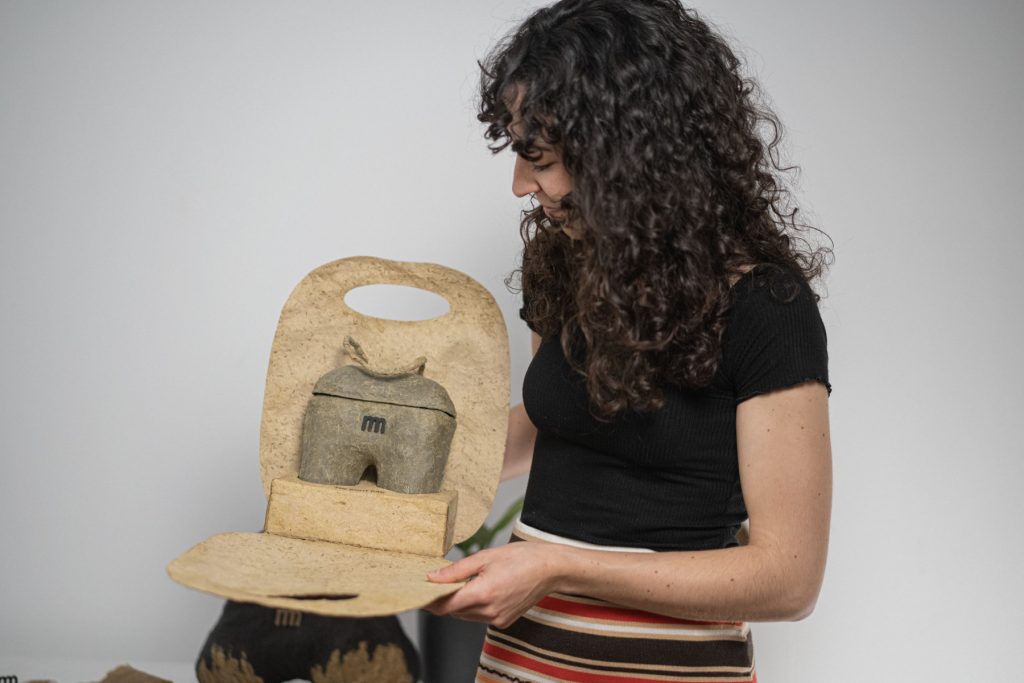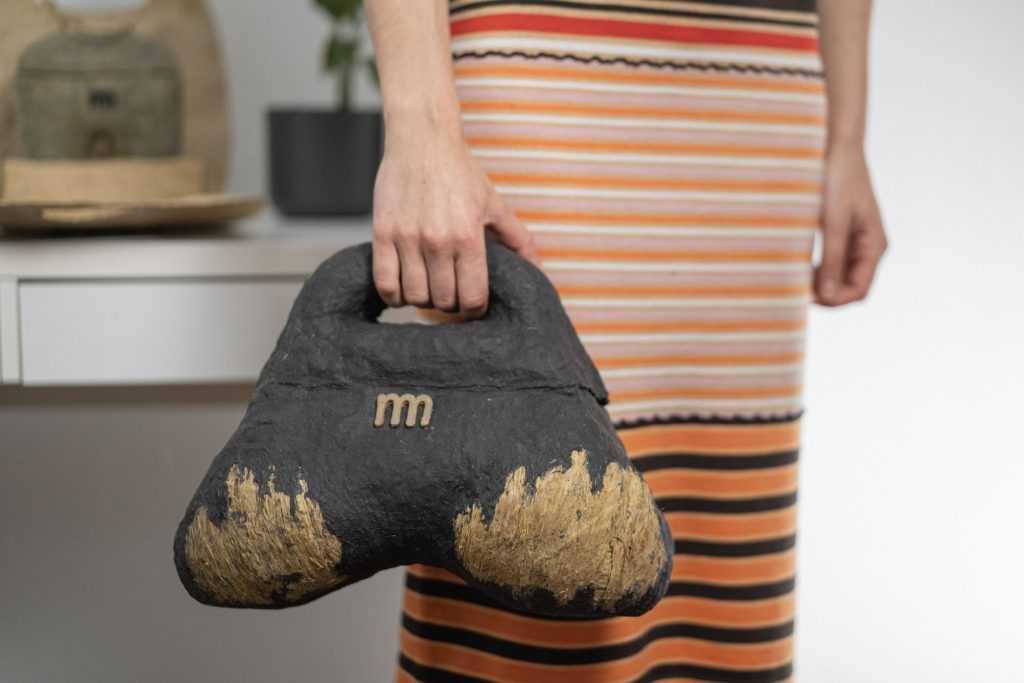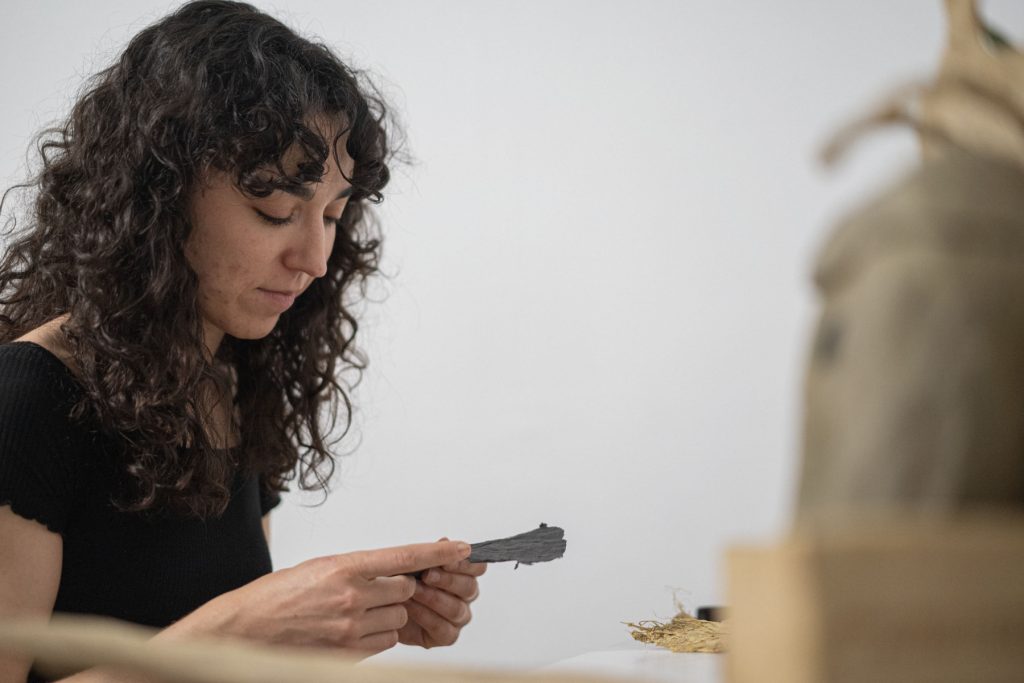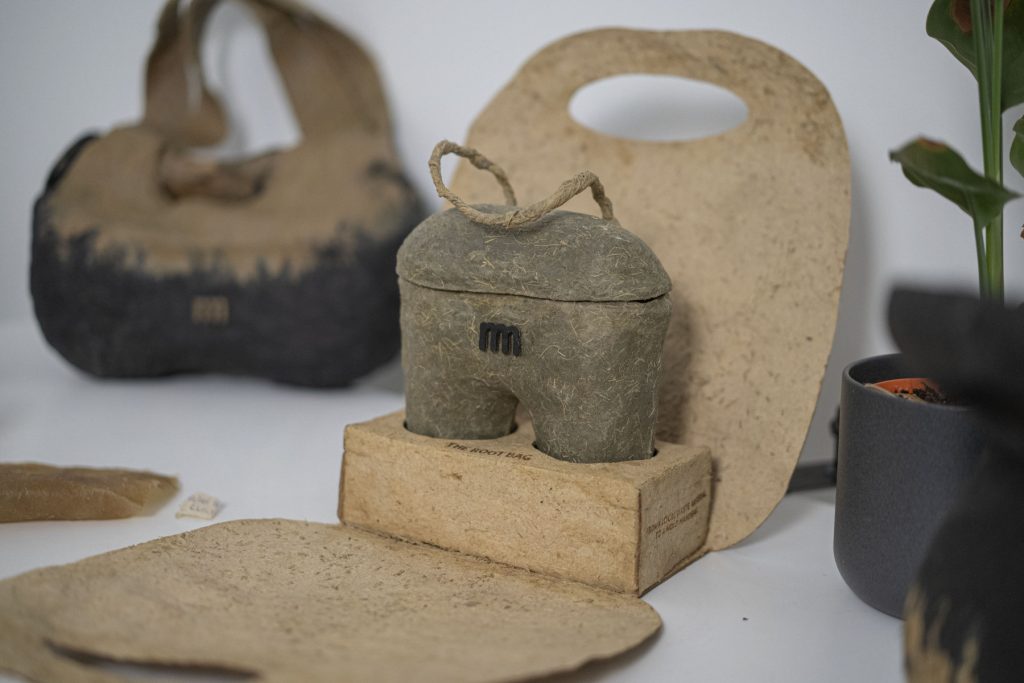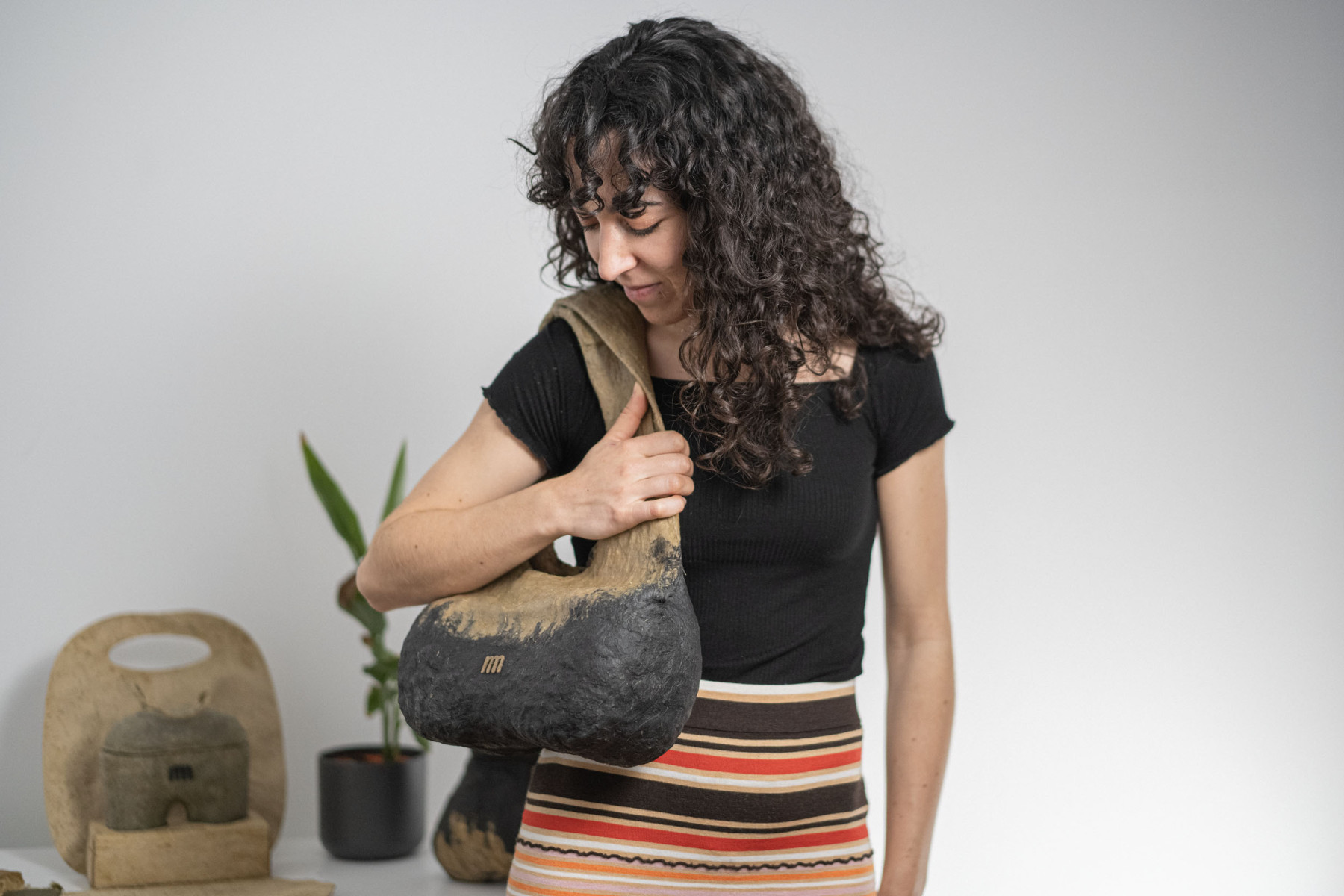
Merging fashion with agriculture
A Catalan fashion designer creating a collection of bags made from corn cobs.
Meet Emma Picanyol, a Catalan fashion designer specializing in pattern-making. In the following interview, she tells us about her Fabricademy journey and the final project she presented at the end of the postgraduate program – a collection of designer bags made from corn cobs.
1. What led you to choose Fabricademy?
I picked Fabricademy because I was professionally at a place where I lacked the funds to carry on creating and experimenting. After all, despite my education, there were many things on the market that I was unable to produce. This changed when I met Anastasia, who gave me an explanation of what she was doing at Fabricademy. I want to emphasize that one fantastic aspect of the program is that you learn a variety of working methods, new techniques, and new materials that you master in only six months.
2. When did you decide is was the right time to apply to the program?
When I reached a moment professionally where I felt the need to shift, I made the decision to enroll in Fabricademy. The program offers a different perspective on fashion than other institutions. I already had experience in design and 2D work, so I came here because I felt the need to adapt and develop my methods in order to create the same items but in new ways and shapes.
One fantastic aspect of the program is that you learn a variety of working methods, new techniques, and new materials that you master in only six months.
3. What aspects of Fabricademy caught your interest and are you now using them in your creative journey?
When I discovered Fabricademy, one of the features that particularly caught my eye was the opportunity to learn how to make volumetric objects using a vacuum machine which would allow me to manipulate the material to create bags. This was one of the things that inspired me to start since it was a skill I really wanted to learn. Of course, you learn how to use a lot of other techniques, such as the Rhino software, which lets you design your own patterns and allowed me to design, fill in the blanks, and construct my own motif, which I could carve with the CNC. From then on, it’s like entering a new world. It’s as if you have the luxury of allowing all of your ideas to come because you know how to make them a reality.
4. How did you come up with your final project idea connecting the worlds of fashion and agriculture?
After completing the first three months of class, I began to consider the final project. I was fully aware that I wanted to connect the worlds of fashion and agriculture because my family has lived in a farmhouse for many generations. I enjoy making connections between two seemingly different worlds.
The raw material is usually the place at which things come together, so I looked into what type of material I could use to make my product and put it to use. The only material that wasn’t used in Catalonia at the moment I was looking for it, was the corn cob which I was able to work with and find in large quantities. After I had the raw material, the two worlds connected and I began working on my project.
5. Did you find any challenges along the way?
Yes, I encountered several challenges while working on the project. In the beginning, I was looking for materials to use from my house, but there weren’t any. All we had was food for the cows. I had to keep thinking and searching for agricultural materials that could be found in the region that I could collect.
The shape of the bags, which I needed to be highly organic for the biomaterial I was making to take on its final shape, was another issue I ran into when building my project. And that was somewhat troublesome. Then, obviously, because of the little time you have during these three months to create the project, I noticed a lot of things that I could do better, but I didn’t have the time. Now that we are done, there is a long list of things to change and improve, mainly to shorten the time of the heat treatment. I need time to research and fully finish correcting these things. But ultimately, everything comes down to time and the capacity for growth.
6. Did the other Fabricademy students help you in prototyping your idea?
Yes, of course. We were able to benefit from each other’s opinions greatly. While it was excellent when they shared their positive opinions with me, I also appreciated when they pointed out areas in which I could improve. At Fabricademy, they really help you develop your ability to express yourself honestly, be direct, and grow at the same time.
7. Do you feel that you are now part of a network?
I do believe that. Fabricademy is a large, global family and we are all working toward the same goal of making the world a better place.
Discover Fabricademy here.
